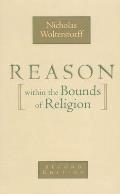Nicholas Wolterstorff thinks so. The following quotes are from "Reason within the Bounds of Religion", 1984, Eerdmans, 2nd Ed.
On February 19, 1616, the Holy Office in Rome submitted to its theological experts the following two propositions for their assessment:The theologians met four days later on February 23, and the day after that announced the results of their deliberations. Their conclusions were unanimous. The first proposition they declared to be "foolish and absurd philosophically, and formally heretical, inasmuch as it expressly contradicts the doctrine of the Holy Scripture in many passages, both in their literal meaning and according to the general interpretation of the Fathers and Doctors." The second proposition they declared "to receive the same censure in philosophy, and as regards theological truth to be at least erroneous in faith." (p. 15)
- The sun is the center of the world and hence immovable of local motion.
- The earth is not the center of the world, nor immovable, but moves according to the whole of itself, also with a diurnal motion.
The matter was then handed over to the Congregation of the Index (under the General Congregation of the Inquisition). On March 5 of the same year this Congregation handed down its decree:It has ... come to the knowledge of the said Congregation that the Pythagorean doctrine - which is false and altogether opposed to the Holy Scripture - of the motion of the Earth, and the immobility of the Sun, which is also taught by Nicolaus Copernicus in De revolutionibus orbium coelestium, and by Diego de Zuniga (in the book) on Job, is now being spread abroad and accepted by many.... Therefore, in order that this opinion may not insinuate itself any further to the prejudice of Catholic faith, the Holy Congregation has decreed that the said Nicolaus Copernicus' De revolutionibus orbium, and Diego de Zuniga's On Job, be suspended until they be corrected.... In witness whereof the present decree has been signed and sealed with the hands and seal of the most eminent and Reverend Lord Cardinal of St. Cecilia, Bihop of Albano, on the fifth day of March, 1616. (p. 16)
Sometimes an incompatibility between what the Christian scholar regards as the results of science and what he regards as the belief-content of his authentic commitment, can best be resolved by the Christian's revising his beliefs on the latter, for he may have been mistaken as to what constitutes the belief-content of his authentic commitment. (p. 94)
... the Congregation of the Inquisition viewed the geocentric theory as belonging to authentic commitment. I think they were mistaken, and virtually the entire community of Christians now thinks they were mistaken. We have all revised our beliefs, though we have by no means all revised them at the same point. What originally induced the revisions were developments in astronomy and physics. Thus it must be concluded that developments in science have induced at least some of us to move toward a better view as to what constitutes authentic Christian commitment - if you assume (as I do) that at least some of the revisions constitute a better view. (p. 94)
Christians have been mistaken in what they thought constituted authentic Christ-following; and sometimes they have become aware of their mistake through developments in science. (p. 95)

No comments:
Post a Comment